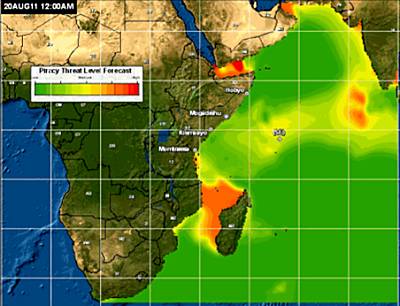WASHINGTON — The U.S. Navy is sponsoring research that seeks to better understand how marine mammals respond to human-made undersea sounds.
Some of that research is taking place at Navy acoustic ranges like the Atlantic Undersea Test and Evaluation Center, or AUTEC, in the Bahamas. AUTEC’s research is sponsored by the Chief of Naval Operations Environmental Readiness Division.
“The goal of our program is to study animals in their natural environment through the application of passive acoustics, which means we listen for the vocalizations that are made by animals and then try to use detections of vocalization as a proxy for the behavior,” said Dave Moretti, the principal investigator for marine mammal monitoring on the Navy’s ocean-listening ranges, in an April 21 interview on Pentagon Web Radio’s audio webcast “Armed with Science: Research and Applications for the Modern Military.”
AUTEC usually employs hydrophones — listening devices similar to underwater microphones — for tracking submarines and other undersea vehicles. Now, the center is using hydrophones to listen to undersea creatures, like whales, Moretti said.
“We’re trying to take the infrastructure of these facilities and apply it to passive acoustics for the study of marine mammals,” he explained.
In March 2000, a group of beaked whales became disoriented and stranded themselves upon a beach near AUTEC. There are several species of whales in the area where AUTEC is located, Moretti said, with beaked whales being the most prevalent.
“At AUTEC, to our knowledge, there haven’t been any mass strandings of beaked whales …even though they use active sonar repeatedly throughout the year,” he said. Moretti defined mass stranding as when two or more adult mammals swim up onto a beach.
“[At AUTEC] you don’t have mass strandings even when sonar operations take place,” Moretti said, “and it’s one of the things that we’re trying to tease out of the data, to try to understand why that is.”
Moretti said that ships are on the range at scheduled times and are precisely tracked. “The sensors are really set up to track anything under the water, but anything on the surface is also tracked,” he said.
AUTEC has the ability to correlate data related to the ocean-going mammals with vessel traffic, Moretti said. “So now we can get a record of both animal behavior and also a precise record of ship tracks in open ocean waters,” he noted, “and in cases like the Northwest Providence Channel, putting those data sets together is very, very difficult.”
To ensure continuity of data when the animals are not vocalizing or out of range of the sensors, Moretti said, selected animals are tagged with transponders that allow satellites to track their movement. This is a cooperative effort with representatives from the National Marine Fisheries Service and the Bahamas Marine Mammal Research Organization. In addition, he said, representatives from the Woods Hole Oceanographic Institution in Massachusetts and St. Andrews University of Scotland are assisting in the program.
Another type of tag used in the program is the D‑tag, a digital recorder developed at Woods Hole that provides data on the pitch, roll, and depth of the animal’s movement.
“Those tags stay on about 19 to 20 hours,” Moretti said, “but they give very precise…very pristine data on the movement of animals within that time span.”
Moretti explained that the data they are gathering has provided much needed insights into the private lives of whales, particularly the elusive, deep-diving beaked whales.
“I think what people forget is that we’re trying to study animals in their natural environment, but these animals live in the deep ocean and they don’t come to the surface often,” he said. “It’s extremely difficult to study their behavior because it’s an environment we’re just not equipped to deal with well.”
Besides learning about behavioral response of whales to man-made sound, Moretti said, the research also is designed to understand the health of the whales.
“We’d like these tools to evolve to the point where we can say something about population health and there’s an effort underway to start some programs for the study of these animals on a population level,” Moretti said. “It’s actually been dubbed the PCAD — Population Consequences of Acoustic Disturbance — modeling,” he added, “but that’s in its infancy, actually.”
Moretti said that complementary research is being conducted at a similar Navy range off the coast of California, with assistance from specialists at Cascadia Research, University of California, San Diego, and the University of Oregon. A third program is currently being developed at the Pacific Missile Range Facility off of Hawaii.
Moretti applauded the cooperative work of the various federal offices and institutions, stating that the project required a broad range of expertise in marine acoustics, signal processing, statistical modeling, marine biology, and animal behavior.
“It brings expertise together to help make sense of these data sets that are being collected,” Moretti said, “and the data have proliferated out into several other studies.”
The Navy’s leaders are trying hard to balance the requirements of military missions with good environmental stewardship, Moretti said.
“It’s to that end that we are funded,” he said, “so hopefully with time, we’ll be able to give some understanding and some guidelines for future environmental compliance.”
Source:
U.S. Department of Defense
Office of the Assistant Secretary of Defense (Public Affairs)

 von
von 